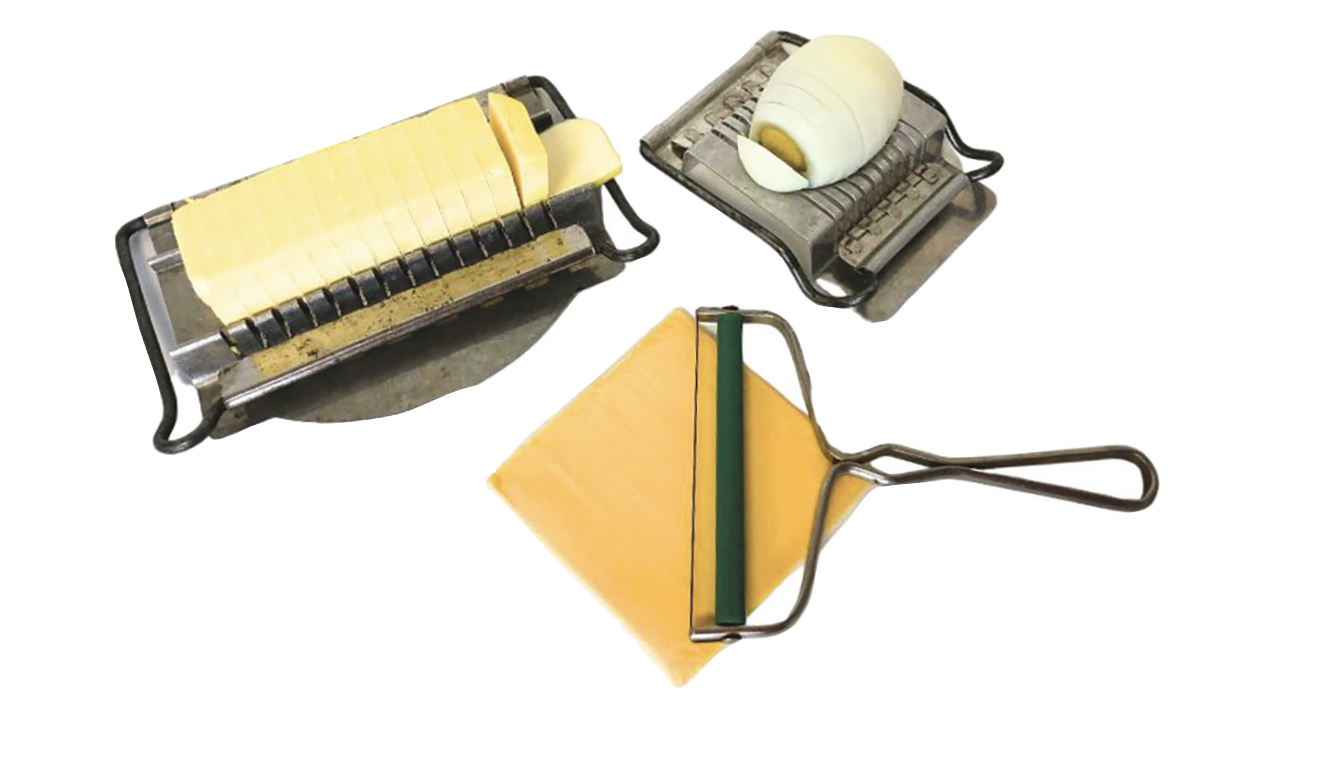
Dorri Partain
Assistant Editor
Who cut the cheese? And the butter and the egg?
Following the American Industrial Revolution of the late 19th Century, inventors were busy devising all types of new gadgets to ease everyday tasks. While most were originally designed to help shopkeepers and restaurateurs in producing uniform portions, a few have made their way into homes to make the slicing process quick and easy.
While using a knife to cut one slice of soft foods such as butter or eggs is common, using piano wire produces a cut that doesn’t stick, crush or crumble the product as a knife blade could. A course of wires evenly spaced provides even, uniform cuts with one downward stroke, as opposed to repeated movements with a knife that may range from thick to thin results.
The wire cheese slicer was adapted to include a roller bar made from wood or metal (and later plastic), with the roller acting as a measuring guide as well as easing the cutting process.
Hinged cutters that can produce multiple slices in one movement can be traced back to a 1913 patent (US 31079135A) awarded to inventor Henry Ellsworth Lock. The wood and metal Butter, Lard, and Cheese Cutter had a base that would hold the item to be cut and a wooden paddle that when pushed down would force it through a cutting grid, producing uniformly sized cubes.
Gadget designers of the mid-20th Century took that idea and revisioned a modern style that would be easy to use, clean and appeal to homemakers as producing time-saving and attractive garnishes. The butter cutter is designed to exactly hold in position one quarter stick of butter or margarine, producing 15 quarter-inch slices in seconds.
The egg slicer neatly holds the egg in an indention, producing 11 thin slices, perfect for garnishing salads or layering into a gelatin mold. While most likely manufactured by the same company due to similarities in design, neither the egg slicer nor butter cutter show the manufacturer’s name.
















